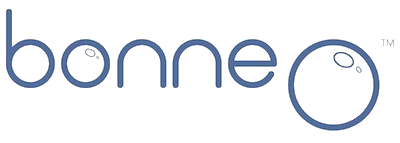There is precise science behind great carbonation. Creating great carbonation is the starting point of wonderful sparkling beverages. It is easy to reduce carbonation levels, but the maximum carbonation possible is determined by the technology used to create it. In this post we share our three years of R&D to help you understand how to consistently create powerful carbonation.

Powerful bubbles are created through the absorption of carbon dioxide into water. Water is able to absorb more CO2 when it is cold. Pressure is what forces the water to absorb the CO2. Surface contact between CO2 and the fluid is where the absorption happens. So remember:
POWERFUL BUBBLES = COLD WATER + PRESSURE + SURFACE CONTACT
For example, that is why an open warm soda goes flat faster than a cold one (warm fluid will release CO2 faster) and that is why a fountain soda (exposed to atmospheric pressure) never tastes as carbonated as a sealed can of soda (sealed higher pressure).
To demonstrate the science of carbonation, we tested the carbonation from four different carbonation environments using a specifically designed, precise measurement tool from Pepsico - well known carbonation experts. No they didn't supply it, we bought a few of them some time ago.

The measurement device assesses the temperature and pressure of a carbonated fluid and offers a carbonation measurement in terms of the volume of CO2 per volume of fluid. The chart from the measurement instrument side panel is reproduced below. There are two versions, for sugary beverages and sugar free - we'll be using the sugar free table in this case.

Qualitatively speaking, the more blue the figure the more biting and powerful the carbonation. The more red the figure the lighter the carbonation. Moderate carbonation is found starting at around 3.00:1. Strong carbonation is found starting at levels 3.50:1 and above.

We tested the sparkling water output of the Bonne O system and the latest Sodastream model (Play) and contrasted the results with Perrier and San Pellegrino. All were tested at a constant cold water temperature. To ensure comparability we used Sodastream according to their user guide and further carbonated for 2 full seconds jetted four times versus the recommended three times. Each was tested multiple times and these results are specifically accurate and generally consistent across tests.
San Pellegrino is generally known as a moderately carbonated sparkling water and the results were approximately 13 PSI at 35F. This results in 3.00:1 carbonation rating which is consistent with moderate carbonation.


The Sodastream system resulted in approximately 15 PSI at 35F. This results in 3.20:1 carbonation rating which is moderate carbonation, although more carbonated than the San Pellegrino.


Perrier is generally known as a full carbonation sparkling water and the results were approximately 18 PSI at 35F. This results in 3.53:1 carbonation rating which is consistent with strong carbonation.


The Bonne O system resulted in approximately 21 PSI at 35F. This results in 3.86:1 carbonation rating which is very strong carbonation, more carbonated than Perrier.


Returning to the science of carbonation, there are three reasons for this result.
First, we used cold samples for all four results. Without cold samples, all results will be less positive.
Second, the Bonne O system maintains a pressurized environment from creation to testing. The sparkling water is 100% pressurized and sealed until it is tested.
Third, the Bonne O system forces surface contact between the CO2 gas and the fluid by a standardized, electronic, pump driven carbonation process. Every beverage created must use this same process, ensuring the pressurized surface contact for the necessary time required for powerful carbonation every time.
Note that while it is easy to reduce carbonation levels (e.g., use part of a carbonator), it is impossible to increase carbonation beyond what the technology enables.

We hope you enjoyed a somewhat quick summary of what three years of R&D have taught us and that you have learned what goes into creating powerful carbonation. If you have questions, ping us to chat!
